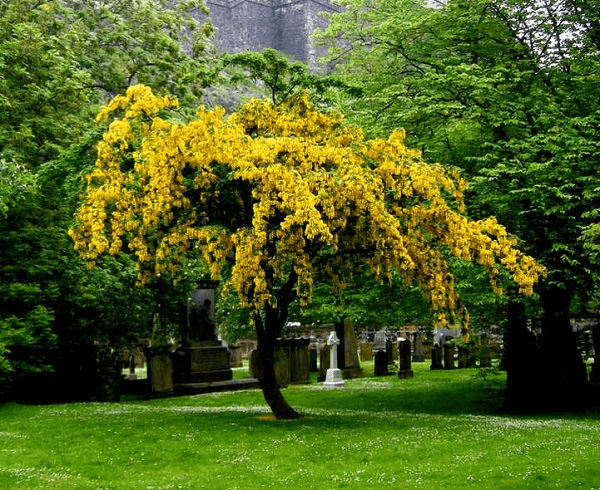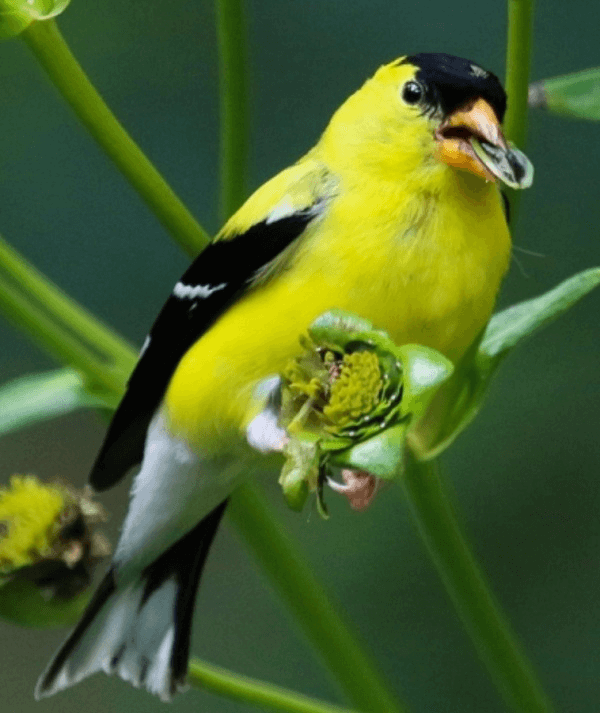The Laburnum Top Summary Class 11 EnglishTed Hughes wrote a magnificent poem "titled "The Laburnum Top," describing how life develops. Change is constant, yet it always has its own character at the beginning. Autumn gives off a sense of impending dissatisfaction, while nature suggests the unpredictability of a fresh beginning. 
The constant presence of their mother gives the baby birds, who are the bards of nature, the opportunity to speak their vital essence. No matter how gloomy the weather is, even the laburnum tree begins to live again, letting go of all its fears and joining the everlasting pleasure that exists in nature. Ted Hughes describes in this poem how he saw this natural occurrence on the top of a laburnum tree and how it made him think. Context of the PoemThe Laburnum Top Summary will make it easier for students to study this poetry. Ted Hughes is the author. A laburnum tree and a goldfinch bird serve as the focal points of the poem. The poem's central idea demonstrates how the two have a mutual connection. 
Additionally, it begins by mentioning how quiet the laburnum tree is in the hazy September light. The tree's golden leaves and seeds lying on the ground's surface catch his attention. It briefly seems to be motionless until a goldfinch bird lands on its branch. As soon as the bird begins to chirp, the poet sees the tree spring to life. She continually flies in and out to provide food for her babies. As a result, once she goes, the tree regains its mysterious quiet. About AuthorTed Hughes, also known as Edward James Hughes is most known for his works of poetry and children's literature. He was an Englishman by birth and upbringing, and he held the position of Poet Laureate (a brilliant poet chosen to serve in the British royal family) from 1984 until his death in 1998. He is generally cited by experts as one of the finest authors of the 20th century as well as one of the finest writers of his time. The Times' list of "the 50 greatest British writers since 1945" put Hughes fourth in 2008. Structure of PoemTed Hughes' poem "The Laburnum Top" has three stanzas. The poem's second stanza, which includes nine lines, is the only one that is lengthy enough. It describes the poem's major action. The remaining stanzas are quite brief, however, and the last one includes only one line. The poem doesn't follow a certain rhyme pattern. However, it does contain a few slant rhymes. For instance, the words "trillings" and "thrills" have an inconsistent rhyme pattern. Additionally, the poem's lines generally have more than ten syllables. While others are relatively short, showing the poem's shifting motion. Summary of Laburnum TopStanza 1The poet describes seeing a laburnum tree (with its golden blossoms) in the first line. "The Laburnum top is silent," he said. In September, during the day, the tree is motionless and seems to be dead. Even the sun's rays have a yellow color. The leaves on the tree have gone yellow since it is autumn, and its seeds have fallen to the ground. The poet constantly refers to the color "yellow" in this stanza. The golden coloration of the tree's blossoms, greenery, and sunshine all started with the tree's blooms. The color yellow represents stillness (a day devoid of rainfall or air), death (due to the yellow leaves), and beauty (because of blooms that have fallen off in the shape of seeds). The poet attempts to convey the terrible state of the quiet, decaying, and seedless (useless) laburnum tree throughout the whole stanza. Word Definition Laburnum is a little tree with dangling branches, deadly seeds, and yellow flower petals. Stanza 2The deathly scene, however, abruptly transforms as the goldfinch enters with a chirping twitch. The goldfinch is a bird with a striking golden color. "Short chirping sounds" is what "twitching chirrup" refers to. While mounted at the branch's end of the tree, the bird appears very cautious and makes quick, unexpected movements. Perhaps it is keeping an eye out for any potential threats. Then it moves smoothly yet quickly through the thick bark of the laburnum tree with attentiveness. The moment she steps inside the laburnum tree, where her nest is located, a machine of chitterlings, wing tremors, and trilling begins to operate. Here, the machine represents the bird's young, or baby birds. When a piece of equipment first begins, it creates a lot of noise. Similar to how the young birds react to seeing their mother, they begin to chirp like a machine and quickly flatten their wings in delight since their mother has arrived with food. They were lonely and hungry since they were separated from their mother. The mother bird and her offspring are now causing the whole tree to tremble and thrill. The poet undoubtedly wants us to experience how a tree that seems to be dead springs to life after accepting the mother bird and her young. The birds now have a place to stay, and the tree has life as a result. Therefore, the goldfinch is the driving force behind her family, which also includes the laburnum tree. The poet claims that this provides them with fuel by providing food for the young and excitement for the tree. After doing so, she swings to the branch end once again. Only her darkly striped face is noticeable because the rest of her remains are hidden by the yellow of the tree's leaves. Word Definition
Stanza 3When it reaches the branch's end of the tree, it makes odd but endearing chirping noises before starting on its journey towards the infinite, or sky, and the laburnum tree once more goes silent and looks dead. Two opposing explanations of the tree are provided by the poet in Laburnum Top. The first is that the tree is mainly in a state of death-like stillness and quiet, and the second is that the tree provides younger Goldfinches with an atmosphere of security and safety. There is a kind of mutualism between the two. The Laburnum Top explanation shows how important the laburnum tree is to the goldfinch bird because it offers protection to its young. The bird and its offspring are essential to the tree because they give it life. The appearance of the bird breaks the depressing stillness. The tree's lively behavior is caused by the goldfinch's full activity. Top Literary Techniques from The Laburnum Top1. Alliteration: Alliteration is when a consonant sound appears at the start of two or more words in a row. The following are some examples of alliteration in the poem: Examples
2. Simile: a like-or-like contrast between two items Example
3. Metaphor: A metaphor is a comparison between two things that are not direct. Quality is often contrasted. Example
4. Personification: Personification is the practice of imputing human traits to non-human entities. Example
5. Transferred epithet: a form of speech in which an adverb is attached to another word. Example
The Laburnum Top ConclusionThe Laburnum Top Summary gives us knowledge of how nature affects our lives. The laburnum tree is a metaphor for the power and adaptability that nature brings to our lives. Ted Hughes wrote the poem "The Laburnum Top" to illustrate the symbiotic link between the bird and the tree. Typically, the tree is quiet and seems to be dying, but as soon as the bird arrives, it springs to life. The bird and her young are given food and shelter by the tree, and in exchange, the bird and her young move the tree by quivering and fluttering their wings. Once the bird takes off, the tree once again takes on a still and lifeless appearance. The Goldfinch family's fleeting buzzing activity is strikingly compared with the continuous cycle of time and existence in general. Although life may present challenges, neither time nor life will stop or wait for better circumstances. Like the laburnum tree standing firm in its original state of peace, life continues solidly and gently without raising any kind of disturbance. With the help of summary now students can study and enjoy poetry more critically if they have a thorough comprehension of it. |
 For Videos Join Our Youtube Channel: Join Now
For Videos Join Our Youtube Channel: Join Now
Feedback
- Send your Feedback to [email protected]
Help Others, Please Share









